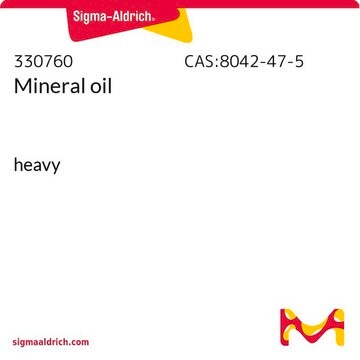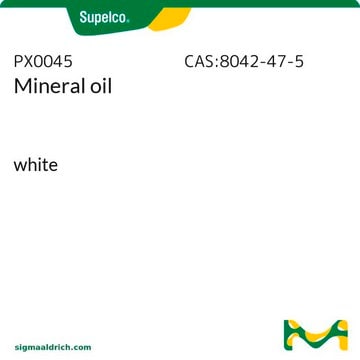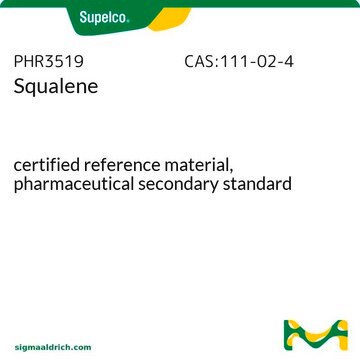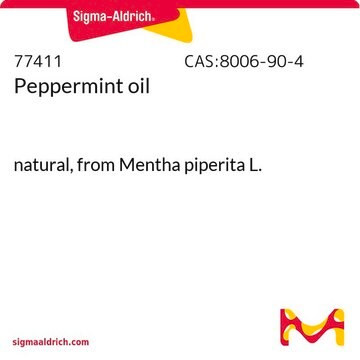59980
Jojoba oil from Simmondsia chinensis
tested according to DAC
Synonyme(s) :
Jojobae oelum, Jojoba bean oil, Jojoba liquid wax
About This Item
Produits recommandés
Densité
0.87 g/mL at 20 °C
Type de lipide
oils
Température de stockage
2-8°C
Vous recherchez des produits similaires ? Visite Guide de comparaison des produits
Application
- Topical application of jojoba (Simmondsia chinensis L.) wax enhances the synthesis of pro-collagen III and hyaluronic acid and reduces inflammation in the ex-vivo human skin organ culture model.: This research demonstrates that jojoba wax can significantly enhance skin health by boosting collagen synthesis and reducing inflammation, making it a valuable ingredient in dermatological applications (Tietel et al., 2024).
- Passive Enhancement of Retinol Skin Penetration by Jojoba Oil Measured Using the Skin Parallel Artificial Membrane Permeation Assay (Skin-PAMPA): A Pilot Study.: This pilot study shows that jojoba oil can enhance the penetration of retinol into the skin, suggesting its potential to improve the efficacy of topical retinol treatments (Gruber et al., 2023).
- Anti-Herpes Simplex 1 Activity of Simmondsia chinensis (Jojoba) Wax.: This article reports on the antiviral properties of jojoba wax, specifically against Herpes Simplex Virus 1, providing a basis for its use in antiviral formulations (Tietel et al., 2021).
- Inhalable Jojoba Oil Dry Nanoemulsion Powders for the Treatment of Lipopolysaccharide- or H(2)O(2)-Induced Acute Lung Injury.: This study investigates the use of jojoba oil in inhalable nanoemulsion powders for treating acute lung injury, highlighting its therapeutic potential in respiratory conditions (Zhang et al., 2021).
Code de la classe de stockage
10 - Combustible liquids
Classe de danger pour l'eau (WGK)
WGK 3
Point d'éclair (°F)
Not applicable
Point d'éclair (°C)
Not applicable
Équipement de protection individuelle
Eyeshields, Gloves
Certificats d'analyse (COA)
Recherchez un Certificats d'analyse (COA) en saisissant le numéro de lot du produit. Les numéros de lot figurent sur l'étiquette du produit après les mots "Lot" ou "Batch".
Déjà en possession de ce produit ?
Retrouvez la documentation relative aux produits que vous avez récemment achetés dans la Bibliothèque de documents.
Les clients ont également consulté
Notre équipe de scientifiques dispose d'une expérience dans tous les secteurs de la recherche, notamment en sciences de la vie, science des matériaux, synthèse chimique, chromatographie, analyse et dans de nombreux autres domaines..
Contacter notre Service technique











